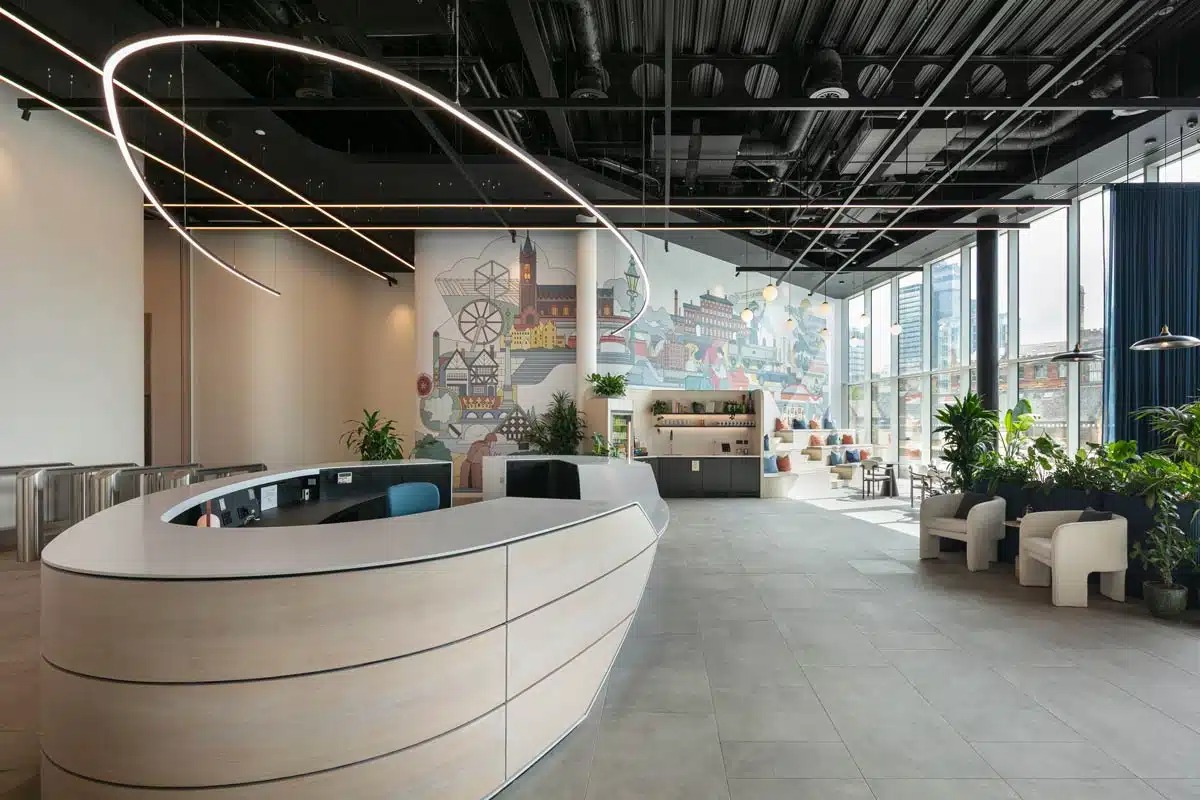When clients, partners, or employees walk into a workplace, the first space they see is the reception area. In a matter of seconds, this space tells a story about your brand, values, and professionalism. A well-designed reception zone isn’t just visually appealing—it also plays a strategic role in comfort, accessibility, and brand cohesion. Beyond aesthetics, thoughtful choices like ergonomic seating and inclusive furniture—such as office chairs for large people—make a powerful statement of care and functionality.
In the wake of hybrid work trends, evolving wellness standards, and universal design principles, businesses across Australia are rethinking their front-of-house experience. This article explores how investing in the right reception desk and inclusive seating can enhance brand identity, support wellbeing, and future-proof your workspace.
First Impressions Matter: The Role of the Reception Desk
Your reception desk isn’t just a piece of furniture—it’s the anchor of your welcome experience. As the first point of contact, it sets expectations about how you do business. Whether in a law firm, tech start-up, or medical clinic, reception areas must be professional, functional, and on-brand.
What Makes a Great Reception Desk?
A well-designed reception desk should:
- Balance aesthetics and ergonomics – ensuring your receptionist is supported throughout the workday.
- Accommodate technology – like dual monitors, visitor sign-in tablets, or booking systems.
- Integrate branding elements – using finishes, colours, and logos to reflect your identity.
- Allow accessibility – with wheelchair-friendly cut-outs or adjustable heights.
- Enable clutter-free organisation – hiding cables, stationery, and paperwork.
For high-traffic sectors like education, healthcare, and government, reception desks also need to be robust and easy to clean. Think antimicrobial surfaces, modular configurations, and high-density melamine or veneer options.
Inclusive Seating: Supporting All Body Types with Dignity
One of the most overlooked elements in reception planning is seating diversity. Many workplaces continue to use chairs designed for the “average user”—excluding those with larger bodies, mobility challenges, or ergonomic needs. This can lead to discomfort, embarrassment, or even workplace complaints.
Why Size-Inclusive Furniture Matters
Australia’s population is diverse, and so are our body types. Providing a mix of seating solutions, including office chairs for large people, signals that your business prioritises inclusivity and comfort.
Heavy-duty chairs aren’t just about weight capacity—they also feature:
- Wider seat pans and reinforced frames
- Higher backrests for full lumbar and shoulder support
- Adjustable arms and gas lifts suited to taller or heavier users
- Weight ratings ranging from 150–250kg, compliant with Australian safety standards
- Durable fabrics that resist wear, spills, and fading
Whether placed in the reception, meeting rooms, or breakout zones, these chairs show respect for every visitor and employee, enhancing both comfort and trust.
The Business Case: Wellness Meets Workplace Strategy
Reception furniture isn’t just about form—it’s a key element of business infrastructure. With the rise of ESG (Environmental, Social, and Governance) reporting and HR compliance audits, many organisations are reassessing their physical environments for health, equity, and usability.
Key Business Benefits
- Enhanced Brand Perception
Sleek furniture, inclusive seating, and a clean aesthetic leave a strong impression on clients, suppliers, and stakeholders. - Improved Accessibility and Compliance
Accommodating different body types and mobility levels is not just good practice—it’s increasingly a legal expectation under Australia’s Disability Discrimination Act. - Employee Morale and Retention
Inclusive and comfortable spaces show your team that you value their wellbeing, which improves engagement and reduces turnover. - Productivity and Efficiency
A well-planned reception area optimises workflows, from mail delivery to visitor check-ins, ensuring your front-of-house runs like clockwork.
Matching the Aesthetic: Materials and Layout Trends
Reception areas in 2025 are a far cry from the cookie-cutter layouts of the past. Australian designers are embracing calming colour palettes, biophilic elements, and custom joinery to create modern, welcoming spaces.
Top Design Trends to Consider
- Curved reception desks that create a softer, more inviting silhouette.
- Acoustic panelling to reduce noise in open-plan foyers.
- Sustainable materials like bamboo, recycled plastics, and FSC-certified timbers.
- Modular seating that adapts to visitor volume and layout changes.
- Statement lighting that draws focus without overwhelming.
These trends not only enhance your brand’s visual impact—they also contribute to calmer, more efficient spaces that serve your operational needs.
Localising for Australian Workplaces
In Australia, reception areas must stand up to unique environmental and regulatory conditions. From extreme weather changes to Safe Work Australia guidelines, your choice of furniture should meet both functionality and compliance expectations.
Pro tip: Choose commercial-grade pieces that meet AFRDI (Australasian Furnishing Research and Development Institute) or GECA (Good Environmental Choice Australia) certifications. These ensure durability, low VOCs (volatile organic compounds), and ethical sourcing—perfect for government and education fit-outs.
Future-Proofing with Flexible Reception Furniture
As hybrid work becomes mainstream, many offices are redesigning reception areas to serve multiple functions—hot-desking, casual meetings, or client onboarding. That means your reception desk and seating must support flexibility without compromising design.
Consider pairing your layout with:
- Mobile storage for welcome kits and marketing materials
- Digital kiosks for check-ins or wayfinding
- Lockers for visitor belongings
- Collaborative seating that accommodates group conversations
These add-ons make your reception zone more dynamic, aligning it with modern workplace expectations.
Final Thoughts: Design That Welcomes Everyone
Designing a reception space that is inclusive, stylish, and functional doesn’t have to break the bank. Whether you’re fitting out a new office or upgrading your existing space, start with two foundational elements:
- A well-designed reception desk that reflects your brand and supports staff ergonomics
- Supportive, size-inclusive seating like office chairs for large people that make every visitor feel seen and respected
Together, these components create more than a welcome area—they create trust, comfort, and a lasting impression.

